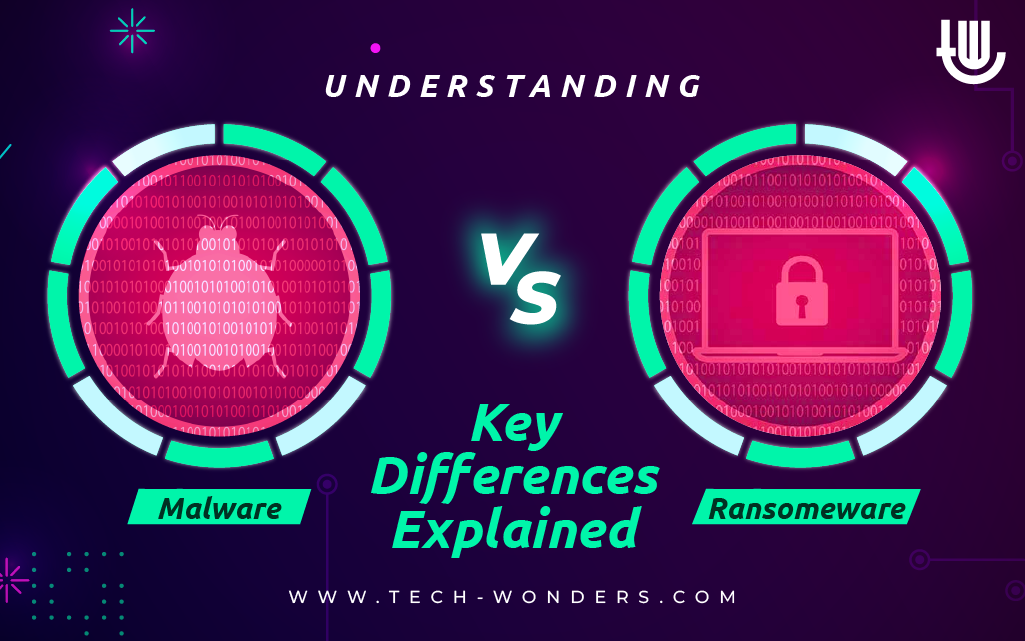
With the rise in cybersecurity attacks across the globe, people fail to implement the best practices in cybersecurity protection. It is because of their lack of understanding of the most common cyber threats. Based on statistics, 2022 saw over 5.5 billion malware attacks, a significant count of ransomware-based. Thus, as an individual and a professional, knowing the critical differences between malware and ransomware and engaging in the best mitigation techniques for the ever-evolving and lurking threats is essential. Read more in this article that highlights their similar and differentiating factors.
Differentiating Malware vs Ransomware – Key Identifiers
A piece of software intended to harm or jeopardize the regular functioning of a device is called malware (malicious software). In comparison, ransomware is expressly defined as a malware damaging the data-storing devices by encrypting the extension of filenames, making them useless in the process.
Features and Functioning
As discussed above, ransomware is a part of a malware family designed explicitly by cybercriminals who encrypt the victim’s files. The latest encryption technologies, such as AES and RSA, are used in the malware. A ransomware group will drop a ransom note to inform the victim about the attack and attempt to extort money from them. In the event of failure to pay the ransom, the group then announces the victim and their data on a TOR website- typically known as the “name and shame” policy to cause future defamation.
Malware, however, can be used for a plethora of functions such as DDoS, scareware, adware, information stealers, maintaining stealthy persistence, etc. They have different means to spread, such as malicious attachments, phishing, social engineering, fake applications, etc. The main goal of malware is to disrupt the normal functioning of any device.
Malware generally doesn’t involve manual infiltration; it commonly spreads via websites and downloading. However, a ransomware group can implement various techniques to get into their victim’s infrastructure.
Target Audience
Malware can target anyone who clicks on the executable piece of code. Malware has no specific audience. However, ransomware is generally targeted at industries and companies that can pay the ransom amount after an encryption attack. A sophisticated phishing email is directed towards the target company’s employees in case of a ransomware attack.
Also, malware can spread through various means, such as USB drives, installing and downloading content from illegitimate websites, etc, unlike ransomware, which has a particular audience with a unique spreading technique.
Motivation
Malware can spread through a massive family of distributed botnets that serve multiple goals. It can be to harvest personal information, disrupt services, damage the networks, make the systems unavailable for a long time to end users, etc.
On the other hand, the motivation of ransomware groups is to monetize by encrypting the organization’s infrastructure. Modern-day groups exfiltrate the data without going through this hassle, otherwise known as extortion. But in the case of ransomware, groups of people are engaged in the activities under different names, unlike malware, which spreads under a campaign name.
Impact
Ransomware groups can immobilize the day-to-day operations of a company by locking out the victims from accessing critical files. A ransomware attack also means a huge financial and reputational loss to a company since the groups highlight the victim’s name and defame them for their vulnerable infrastructure that enabled the cyberattack.
Malware can remain stealthy, steal passwords, or cause denial of service attacks. It can scan for vulnerabilities in the system and run attacks based on that. It can keep a persistent backdoor for easy access for the attacker to exploit the privileges. Thus, there is a wide range of attacks enabled by malware.
Removal
Trending anti-virus systems can detect a malware variant, and they can be quarantined and removed after detection. Modern-day security solutions have multilayer protection layers that can see the latest malware while they are entering the system to resist the spread.
However, ransomware cannot be removed unless the ransom is paid or decryption software is present. This is not a recommended method to pay helplessly, but decryptors are available only for a few known groups. Most of them don’t have a decryptor yet; thus, organizations should restore files from a backup if possible.
Conclusion
It is crucial to understand that malware and ransomware are closely related yet different in many ways. To protect oneself from a cyberattack, it is essential to understand the key differences between malware and ransomware. Cyberspace surfers can take appropriate mitigation steps at an individual level, such as spotting a phishing email. Also, having a backup restoration process and educating the employees on malware and ransomware, on an industrial grade, is essential.
FAQs
How do I understand if I am infected with malware?
Installing smart malware detection tools such as Windows Defender and leading anti-virus solutions can detect if their device is infected with malware.
How to remove malware?
Malware can be removed by isolating the corrupt or malicious file from others in a folder. Running periodic scans on the devices can effectively quarantine malware and remove them before the spread or damage.
How do we protect systems from ransomware attacks?
Systems can be primarily protected on an organizational level by engaging in vulnerability assessments and red teaming activities frequently. It can simulate real-world attack scenarios. Such actions, coupled with employee awareness, can effectively protect from ransomware attacks.
Are Android and iOS systems infected with malware and ransomware?
Yes, a wide range of malware affects devices running on Android and iOS systems. They spread via applications downloaded from untrusted websites and are embedded in the source code of such apps. To prevent any infection, it is recommended to download everything from trusted resources only and not let the apps have more privileges than necessary.
How do you avoid being infected with malware and ransomware?
There is a famous saying in the cybersecurity industry that security is also an individual’s responsibility, not solely that of any department in an organization. Everyone being aware can significantly reduce the risks of malware and ransomware infections.
Reference:
[1] https://www.statista.com/topics/8338/malware/

Author Bio: This article has been written by Rishika Desai, B.Tech Computer Engineering graduate with 9.57 CGPA from Vishwakarma Institute of Information Technology (VIIT), Pune. Currently works as Cyber Threat Researcher at CloudSEK. She is a good dancer, poet and a writer. Animal love engulfs her heart and content writing comprises her present. You can follow Rishika on Twitter at @ich_rish99.